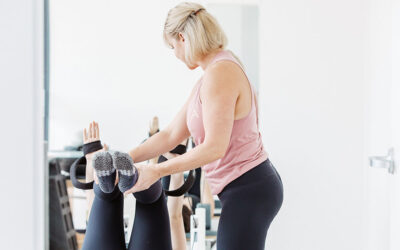Living in southeast Queensland is idyllic, but during the humidity of summer and the rain bombs and floods we’ve had over recent years, we are often plagued with mould. Here are non-toxic ways to get rid of mould in your house.
If this microscopic fungus gets into your system, it can cause breathing issues. You might get a cough, start wheezing, have an irritated throat, eyes or skin, or develop a sinus infection. Long-term exposure to mould is quite serious, which is why you’ll want to clean up certain areas as soon as possible.
Natural and non-toxic ways to get rid of mould
Baking soda
Baking soda isn’t just great for absorbing nasty odours from your fridge; it’s also excellent for getting rid of mould. It’s safe for family and pets. In addition to killing black mould, it absorbs the moisture that attracts it.
Add 1/4 tbsp of baking soda to a spray bottle of water. Shake until it dissolves. Spray the mouldy area with the baking soda solution, then use a scrubbing brush to remove the mould from the surface. Rinse the surface with water to remove any residue and baking soda. Spray the area again and let the surface dry without wiping. This will help kill left-over mould and prevent it from returning.
If the mould is really tough, mix two parts baking soda with one part vinegar and one part water. Stir the mixture until it becomes a thick paste. Spread your mixture liberally on the surface and allow it to dry. Scrub away the mould and stains, and wipe with water.
Vinegar
White vinegar is said to kill more than 80 percent of mould species. It is also safe for humans and animals.
Pour white distilled vinegar into a spray bottle. Don’t water it down. Spray it directly onto the mouldy surface. Leave it for 1 hour, then wipe clean with water. Allow the surface to dry completely. Repeat this process every couple of days to prevent mould from growing. Be sure to allow the vinegar to dry naturally for best results.
Tea tree oil
Essential oils are natural compounds and can do a lot more than just make a room smell nice. Tea tree oil is an incredible insect repellent and antiseptic, but it’s also one of the safest ways to rid your house of mould. It’s a natural fungicide and can clean mould quickly. Not only that, it naturally prevents mould spores from reproducing.
Combine 1 teaspoon of tea tree oil with 1 cup of water in a spray bottle. Shake vigorously to combine. Spray the mouldy area. Leave the tea tree oil on the surface to kill the mould. If you are sensitive to essential oils, be sure to wear gloves.
Lemons
Lemons are natural deodorisers. They can be used as an antiseptic, bleach, stain remover and household cleaner. They can also remove mould. Lemons have a high acidity, which allows them to break down mould.
Juice 3 to 5 lemons in a cup, then pour over the mouldy area. Let it sit for 5 minutes, then wipe the surface with a damp towel. If you have tough mould stains, reapply and scrub the surface.
Three steps to cleaning up after a flood
If you’ve suffered water damage, it’s likely mould will become a problem at some point. After a flood, allow everything to be completely cleaned or dried.
You should only return to a flooded property when it is safe to do so. To prevent mould from taking hold, follow the following three steps:
- Aerate the place. Mould grows with moisture. Open windows and get the air circulating to prevent mould spores from spreading. If there is already mould detected, don’t use fans as it will only spread the spores to other locations around the house.
- Discard items like carpets, paper products and wood if they have absorbed moisture or are contaminated with sewerage. Other items, such as concrete, hard plastics, glass, metal etc., may be saved if they can be properly cleaned. You’ll want to use a damp wipe to remove surface contamination but dispose of those wipes. Heavily contaminated items will need to be thoroughly scrubbed and disinfected.
- Do not remove mould with bleach. Although bleach can kill indoor mould, it works best on non-porous materials. Bleach cannot reach mould growing beneath the surface of things such as wood or plasterboard. The other issue with bleach is that it is a harsh chemical with toxic fumes.
You may also like…
‘Sparkling white’: The budget hacks to transform filthy sneakers
How to save energy around the home


